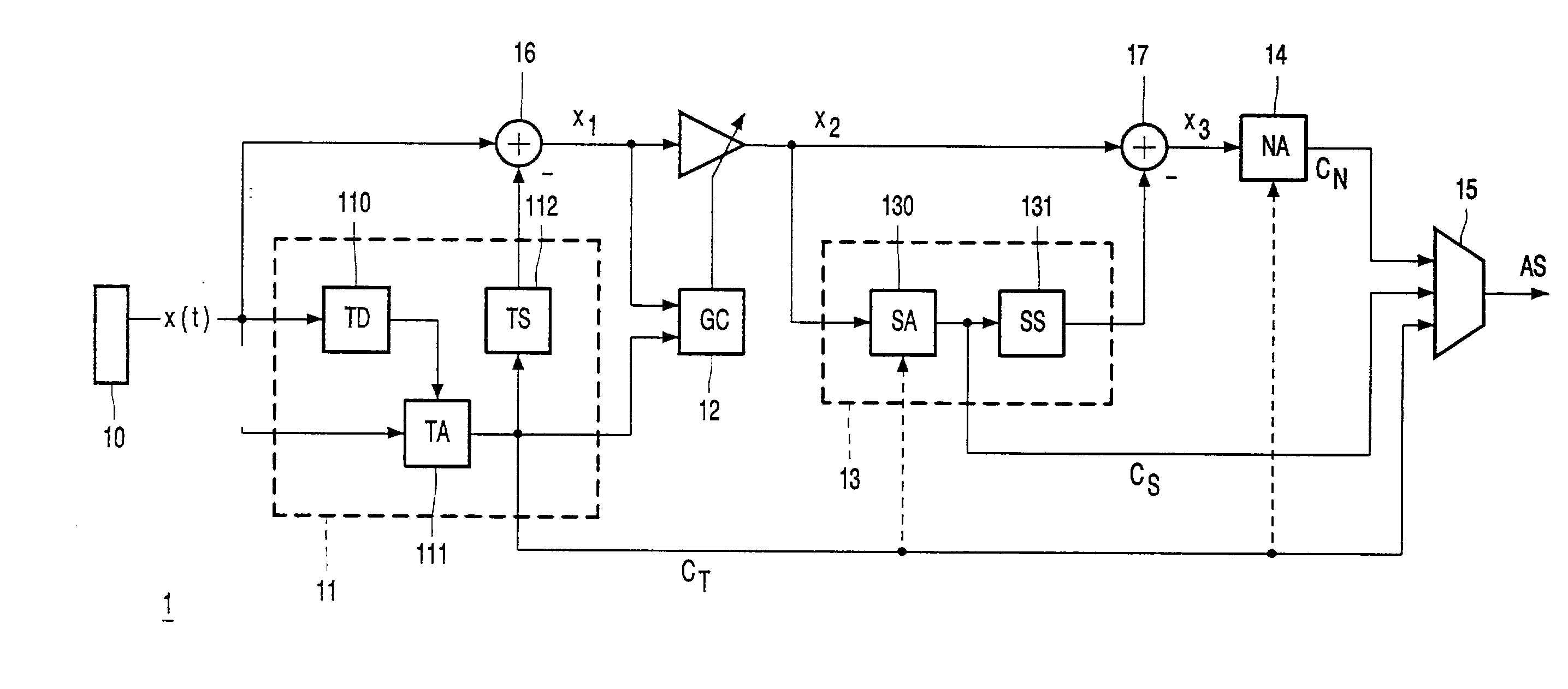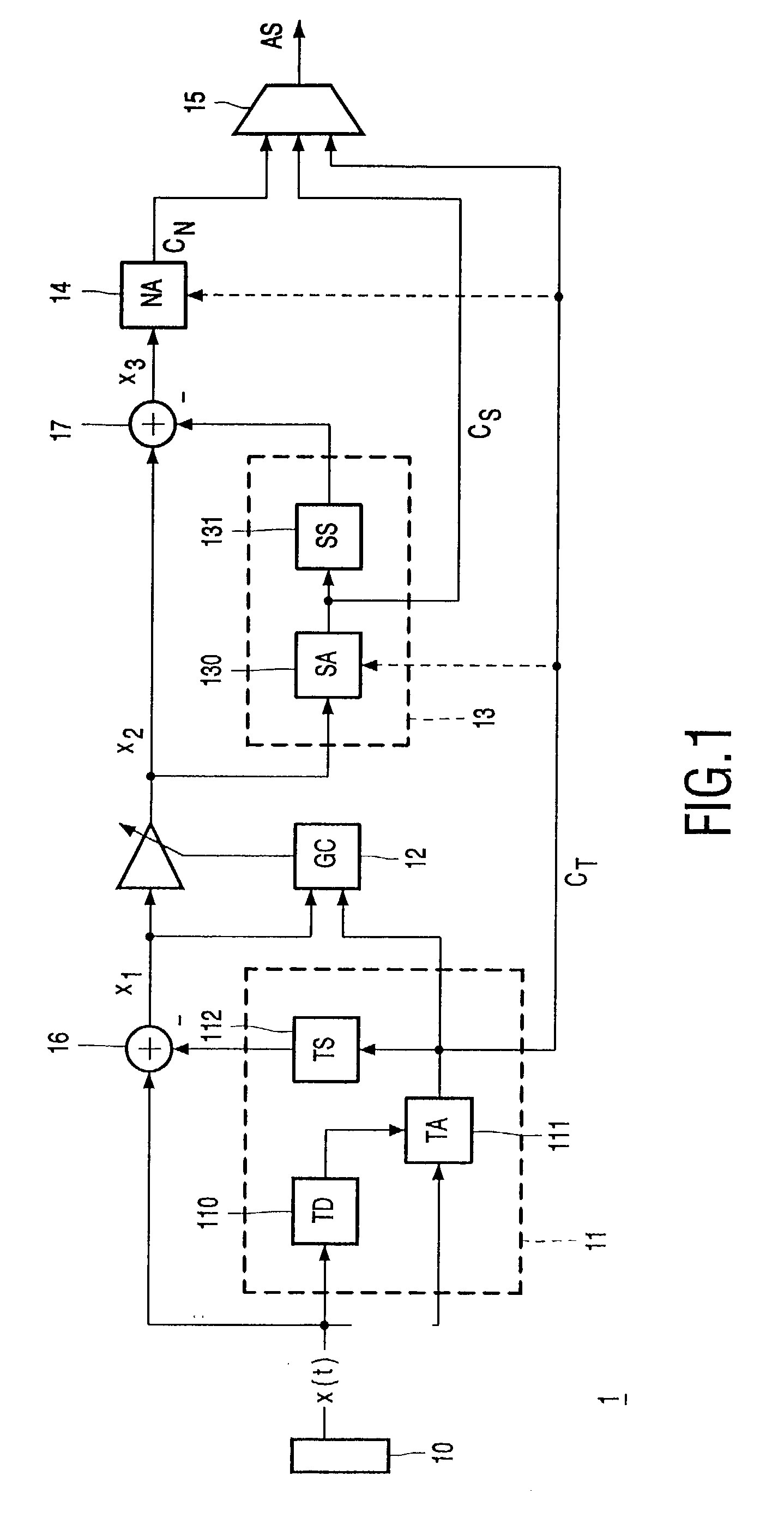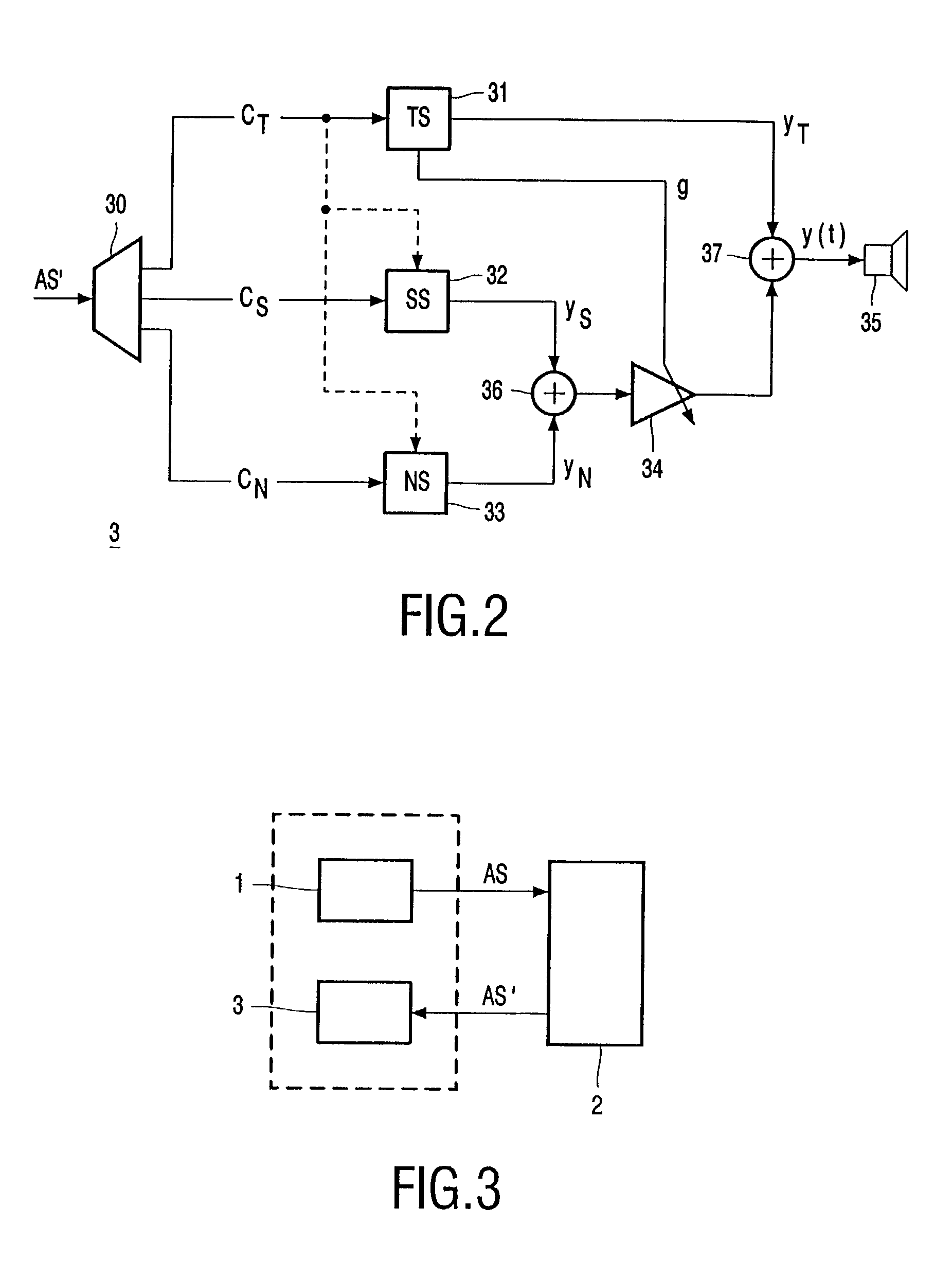Audio coding based on frequency variations of sinusoidal components
a sinusoidal component and frequency variation technology, applied in the field of coding and decoding audio signals, can solve the problems of reducing the accuracy of sinusoidal models, and increasing bit rates unnecessarily, so as to improve the phase continuation and the effect of coding efficiency
- Summary
- Abstract
- Description
- Claims
- Application Information
AI Technical Summary
Benefits of technology
Problems solved by technology
Method used
Image
Examples
first embodiment
where e(.) denotes an arbitary mapping function, e.g. e(.) is the frequency in ERB, and f denotes a frequency in a frame. So in the example of FIG. 6(a), δ1 and δ2 are included in the tracking algorithm cost function to determine which of frequencies fk+1(1) or fk+1(2) are linked to fk, with one of frequency differences δ1 or δ2 being transmitted according to which frequency is linked. (It is also known to include information about amplitudes and phases in the cost function—but this is not relevant for the purposes of the )
[0036]In the first embodiment, the warp factor is used in the sinusoidal coder tracking algorithm as follows. The frequencies of frame k and frame k+1 are transformed to frequencies {tilde over (f)}k and {tilde over (f)}k+1 as follows:
[0037]f~k,1=fk(1+akTL2),f~k+1,2=fk+1(1-ak+1TL2),Equation3
second embodiment
where a1 is the warp factor of frame i, T is the segment size on which a is determined (e.g 32.7 ms), and L is the update interval of the frequencies (e.g. 8 ms). As will be seen from the second embodiment below, the invention is not limited to the above formula or particular method for determining a warp factor as disclosed by Sluijter et al. Neither is an even division of the update interval required, so that, rather than L / 2, an L1 may be used to determine {tilde over (f)}k,1 and an L2 used to determine {tilde over (f)}k+1,2 where L1+L2=L.
[0038]The frequencies {tilde over (f)}k,1 and {tilde over (f)}k+1,2 thus take into account the time warp factor. Now the tracking algorithm, when determining frequency differences from one segment to the next, uses a modified Equation 2 as follows:
Df=|e({tilde over (f)}k+1.2)−e({tilde over (f)}k,1)|, Equation 4
[0039]This will, for example, produce frequency differences δ3 and δ4, FIG. 6(b), when the cost function is applied to the interval k, k...
PUM
 Login to View More
Login to View More Abstract
Description
Claims
Application Information
 Login to View More
Login to View More - R&D
- Intellectual Property
- Life Sciences
- Materials
- Tech Scout
- Unparalleled Data Quality
- Higher Quality Content
- 60% Fewer Hallucinations
Browse by: Latest US Patents, China's latest patents, Technical Efficacy Thesaurus, Application Domain, Technology Topic, Popular Technical Reports.
© 2025 PatSnap. All rights reserved.Legal|Privacy policy|Modern Slavery Act Transparency Statement|Sitemap|About US| Contact US: help@patsnap.com



